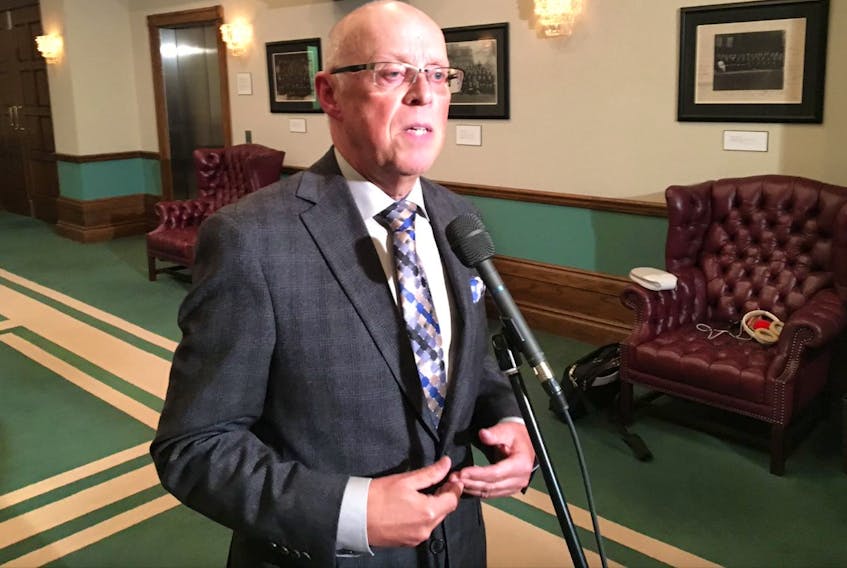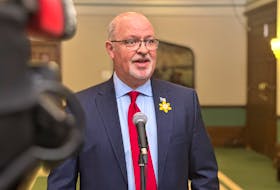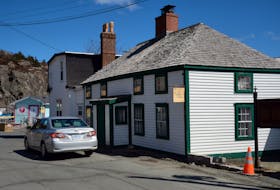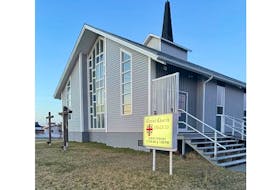ST. JOHN'S, N.L. — Dr. Nicole Stockley recently returned to her Conception Bay South family practice after taking time off to have a baby.
But the days leading up to her maternity leave were concerning, as she worried her time away would affect her patients and staff.
“The most stressful part of my pregnancy was finding someone to replace me while I was away,” she said. “If I couldn’t, there was nobody to see my patients.”

Stockley was lucky to find someone to allow her to take nine months’ maternity leave, but said most doctors aren't as fortunate.
“Most often can’t find locums for even a week’s vacation,” she said, “So, patients go without access.”
That burden is part of the reason why there’s a shortage of practising clinical family physicians in this province and why so many people have no family doctor, she said.
“It’s one of the things that make fee-for-service community family medicine not particularly attractive for graduating physicians,” said Stockley, noting Memorial University has some of the highest numbers of medical graduates.
According to recent poll, commissioned by the Newfoundland and Labrador Medical Association (NLMA), 19 per cent of people in Newfoundland and Labrador — that’s almost two in 10 people, or as many as 99,000 residents — don’t have a family doctor. That’s an increase from 11 per cent in 2014 and 13 per cent in 2017.
Stockley, who is the president of the Newfoundland and Labrador College of Family Physicians, said there are many challenges and changes that need to be made to help retain practising family physicians.
A big issue for family doctors has also been the administrative burden, she said, and doctors spend up to 30 per cent of their time completing paperwork, including requisitions, consultation forms and other documents.
“That amounts to 10 or 15 hours a week that I’m not seeing patients because I’m doing paperwork,” Stockley said.
An aging population and increase in chronic diseases have meant more referrals, more work and more time away from hands-on care, she said.
“The burden of chronic diseases is you’re trying to manage all these issues in a single visit on top of the acute things, like the bad knee,” she said. “But the fee-for-service system was designed to be a single-issue visit … whereas now, it’s very common to deal with multiple issues in a single visit.”
It’s why it’s so difficult for new doctors to replace retiring doctors, she said. With so many patients who have complicated medical backgrounds, it’s difficult for a new graduate to step in and carry a practice that took the previous doctor decades to build.
"...the fee-for-service system was designed to be a single-issue visit … whereas now, it’s very common to deal with multiple issues in a single visit.” — Dr. Nicole Stockley
As well, Stockley said while there may be more family physicians on the Avalon Peninsula that ever before, not all of them are in community clinic practice. Instead, it includes doctors who are involved in teaching, research or work at hospitals.
“That doesn’t equate to practising family physicians,” she said.
A big part of the solution, she said, is to implement a team-based approach, like in British Columbia, Alberta and Ontario. It would mean having a group of health-care professionals, including a family physician, a nurse practitioner and pharmacist, in one clinic.
“It means better care to patients because they can see the best health-care provider,” she said.
She said the system needs a “big-picture change” and a real effort on government’s part.
Working on it
Health Minister John Haggie said a doctors’ shortage is not a new issue in this province, but one government is working on.
In a news conference Wednesday at the Confederation Building, Haggie said he met with representatives of the NLMA and the Newfoundland and Labrador Nurse Practitioners Association and all agree the team-based approach is best.
“The challenge is not purely around numbers (of doctors). The challenge is we’re moving from a system, an old business-based model of medicine based on primary care that was fee for service … and we’re trying to move that now into a new team-based approach with multi-disciplinary teams with a variety of skillsets,” said Haggie, adding that the government spends $5 million on recruitment and retention activities.
"...we’re trying to move that now into a new team-based approach with multi-disciplinary teams with a variety of skillsets." — John Haggie
He said primary health-care teams are already in place in Burin and Bonavista, and will soon start in Gander and Botwood.
“I think the meetings today with the NLMA and the nurse practitioners association show we really have a shared vision,” he said. “We’re all on the same page.”
He said he empathizes with anyone who doesn’t have a family doctor, but ensures the government is working toward a solution.
“We’re in that period of transition, that period of flux,” Haggie said.
“Eastern Health are going to put in on a short-term basis as we craft a shorter-term solution. … It’s a work in progress.”
Twitter: @TelyRosie









